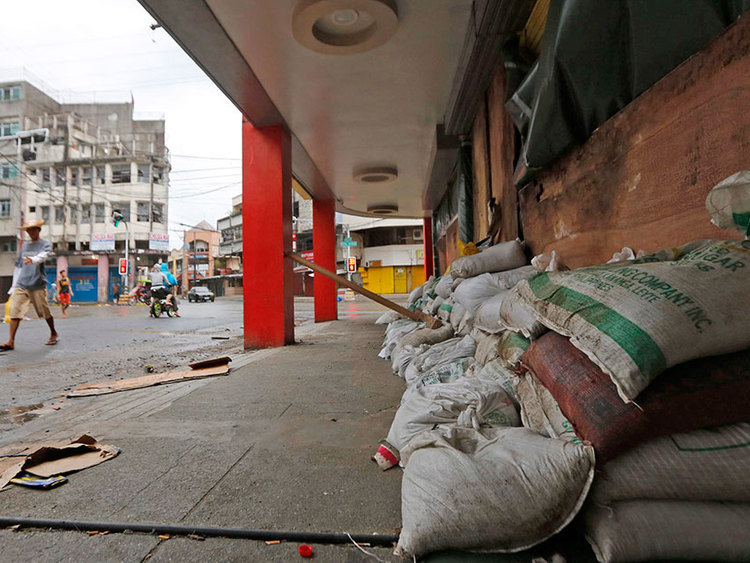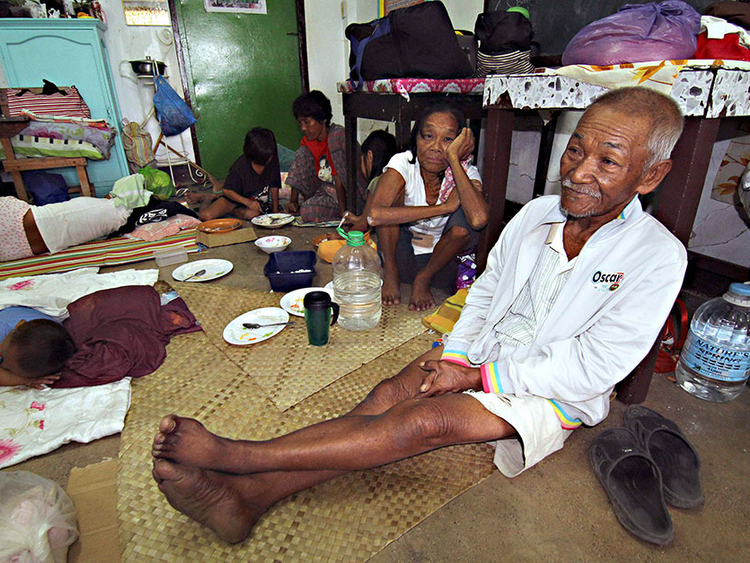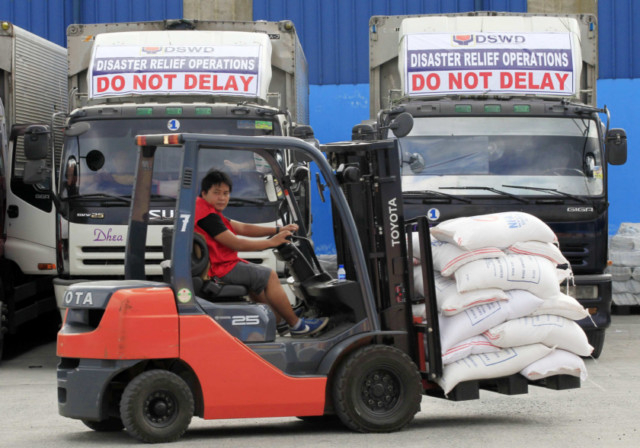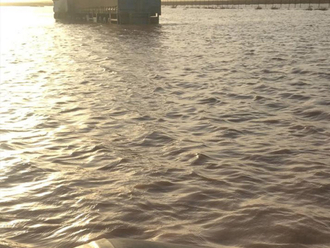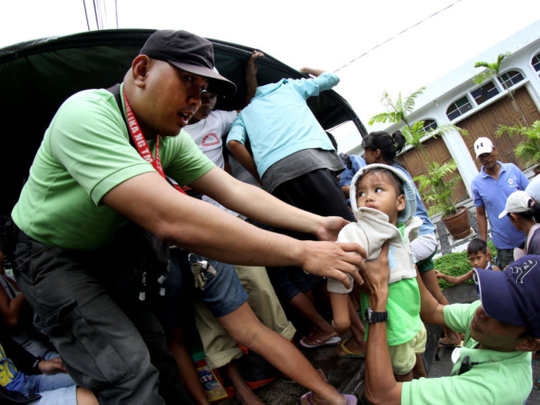
Manila: Typhoon Hagupit (international code name Ruby) has slammed into the eastern Philippines, where more than 650,000 people have fled to safety.
The country's weather agency says the typhoon, packing maximum sustained winds of 175 kilometers per hour and gusts of 210 kph, made landfall late on Saturday in Dolores town in central Eastern Samar province.
Hagupit's winds and pounding rain knocked out power and toppled trees in Dolores and other eastern coastal towns hours before it barreled inland in a region still haunted by the massive death and destruction wrought by Typhoon Haiyan in November last year.
Armed Forces on alert
The Philippines' 120,000-strong military has gone on full alert to respond to a possible catastrophe.
“We’re on red alert so the entire Armed Forces is being mobilised for this typhoon,” Gen. Gregorio Pio Catapang, head of the 120,000-strong military, told a news conference after discussing last-minute preparations.
Army troops deployed to supermarkets and major roads in provinces in the typhoon’s path to prevent looting and chaos and clear debris, all of which slowed the government’s response last year, Catapang said.
Philippine Airlines and Cebu Pacific cancelled about 100 flights to central and southern Philippines on Saturday.
Mass evacuation
More than 616,000 residents of low-lying villages and landslide-prone areas have fled to schools, civic centres, town halls, gyms and churches, the national disaster agency said.
At least 50 municipalities in the central Philippines and the southern part of the country's main Luzon island were at risk of storm surges, with the eye of the storm set to cross five provinces, the Science and Technology department said.
The typhoon was unlikely to hit the capital Manila, home to around 12 million people, the agency said.
The United Nations Office for Disaster Risk Reduction in Geneva said 200,000 people had been evacuated in the central island province of Cebu alone.
"Typhoon Hagupit is triggering one of the largest evacuations we have ever seen in peacetime," said spokesman Denis McClean.
Although it’s unlikely to reach Haiyan’s unprecedented strength, forecasters said Hagupit’s maximum sustained winds of 185 kilometer per hour and gusts of 220 kph were strong enough to set off deadly storm surges and landslides and cause heavy damage to communities and agriculture.
Typhoon rekindles painful memories
In central Tacloban city, where Haiyan’s storm surges killed thousands and leveled villages, news of the approaching typhoon rekindled painful memories among survivors. Many readily fled to storm shelters, a sports stadium and churches even before authorities urged them to evacuate.
“I’m scared,” said Haiyan survivor Jojo Moro. “I’m praying to God not to let another disaster strike us again. We haven’t recovered from the first.”
The 42-year-old businessman, who lost his wife, daughter and mother last year in Tacloban, said he stocked up on sardines, instant noodles, eggs and water.
More than 600,000 people have been moved to safety, including in Tacloban. A U.N. humanitarian agency spokesman, Denis McClean, said in Geneva it was one of the largest peace time evacuations in Philippine history - similar to the 1 million people who were moved last year along India’s coastline before Cyclone Phailin hit.
Nearly 100 domestic flights have been canceled and inter-island ferry services suspended, stranding thousands.
“We’ve not heard of villagers resisting to be evacuated,” regional disaster-response director Blanche Gobenciong said. “Their trauma is still so fresh.”
In Tacloban, residents stacked sandbags to block floodwaters. One McDonald’s store was closed and boarded up to prevent a repetition of Haiyan’s deluge that shattered glass panes and doors of business establishments, allowing looting by desperate survivors.
Disaster preparations widened after two agencies tracking the typhoon closely - the US military’s Joint Typhoon Warning Center in Hawaii and the Philippine weather agency - predicted different directions for Hagupit.
The US agency said Hagupit (pronounced HA’-goo-pit) may veer northwest after coming inland and sweep past the southern edge of Manila, a capital city of more than 12 million people. The Philippine agency, known by its acronym PAGASA, projected a more southern path.
Regional disaster-response director Blanche Gobenciong said the unpredictable path made it harder to ascertain which areas would be hit, but added that everybody “should prepare for the worst.”
“We have a zero-casualty target,” she said. “Just one loss of life will really sadden us all and make us wonder what went wrong.”


